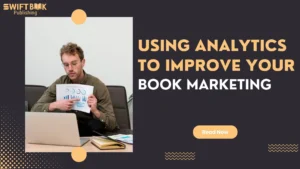If you’ve ever wrapped up a manuscript and thought, “It just needs a quick once-over”, you’re not alone, but you’re also probably wrong. The final stages of editing can make or break your book’s professionalism, and knowing the difference between copy editing vs proofreading is a big part of that.
You’d be surprised how many authors mix the two up. They’re not the same thing, and depending on where you are in your publishing journey, choosing the wrong one can lead to avoidable errors and missed opportunities.
This blog breaks down the key differences, shows you when to use each one, and helps you decide which service your book actually needs, especially if you’re investing in book editing services or trying to make sense of what comes next after the big draft is done.
So… What Is Copy Editing?
Think of copy editing as the sharp-eyed sibling of line editing. A copy editor focuses on correcting grammar, punctuation, spelling, and sentence structure, but also checks for consistency and readability across the entire manuscript.
They’ll look for things like:
- Inconsistent spelling (colour vs colour)
- Misused punctuation
- Grammar issues
- Repeated or awkward phrases
- Clarity in sentence flow
They won’t rewrite your story or restructure your chapters, but they’ll polish your writing to make sure everything reads cleanly and makes sense.
Copy editing is ideal once you’re done with big-picture rewrites and structural changes. It’s the step before book proofreading services come into play.
And What’s Proofreading Then?
Proofreading is the very last stop before hitting publish. A proofreader goes through your fully formatted manuscript and checks for small, surface-level mistakes: typos, missing full stops, extra spaces, or rogue quotation marks.
They’re not there to improve the writing. They’re there to catch anything that slipped through the cracks after the copy edit and formatting.
Proofreading happens when the book is in its final version, and the content is not changing anymore.
Why This Matters for Indie Authors
If you’re handling pricing self-published book strategies, navigating KDP Select vs wide distribution, or prepping for your virtual book launch, the last thing you want is a typo ruining your credibility. Or worse, your first review points out a missing word on page 1.
That’s why knowing where copy editing vs proofreading fits into your publishing timeline matters.
Here’s a Quick Comparison
| Feature | Copy Editing | Proofreading |
| Purpose | Refines language, fixes grammar, improves clarity | Fixes typos and formatting errors |
| When It’s Done | After all content changes are complete | Just before final printing or publishing |
| Common Tasks | Grammar, punctuation, consistency checks | Typos, missing punctuation, formatting issues |
| Affects Style or Content? | Yes – lightly | No – content stays untouched |
| Formatting Reviewed? | Not always | Yes |
Which One Do You Need?
Here’s the honest answer: probably both.
If you’re just finishing your draft and haven’t had a professional editor look at it yet, copy editing is your next step. But if your book has already been through editing, and you’re preparing final files (maybe for print, maybe after you prepare a manuscript for audiobook), that’s when proofreading kicks in.
Don’t skip either, especially if you’re working with book proofreading services or planning a large release campaign with email marketing for authors. Nothing says “unprofessional” like obvious errors.
Where Fact-Checking Fits In
For non-fiction authors, especially those diving into research-heavy topics, don’t confuse proofreading with fact-checking. That’s a separate process altogether. You’ll need to verify data, stats, names, and quotes during or after your copy edit. In fact, fact-checking nonfiction books often happens alongside deep editing, so don’t leave it till the last minute.
Fonts, Videos & Everything Else
While editing focuses on the manuscript’s content, you should also be thinking about the whole package, like your book typography tips (does your interior font work with your genre?) or planning your book promotional video that’ll run during your launch.
In fact, once editing wraps up, you’ll also want to fine-tune things like:
- Your book media kit
- Strategies for using reader reviews for marketing
- Whether you need book translation publishing to reach wider audiences
And yes, double-check that your title and blurb are typo-free before publishing anywhere, especially on Goodreads for authors, where early impressions really stick.
Final Note
There’s no badge for being the fastest to upload your book. But there is value in being known as a quality author who respects their reader. And that starts by knowing the difference between copy editing and proofreading, and using both where needed.
So if you’ve already outlined your launch plan, drafted your query letter, or started teasing your title online, take a step back and make sure the words themselves are sharp, polished, and error-free.
Because a single typo might not ruin your book. But a few of them? That can derail the whole thing.
And if you’re unsure where to start, professional book editing services can guide you through the whole process, no second-guessing needed.







